The age at which children begin drinking alcohol is dropping and is now around 13, on average in the US. Underage drinkers make up a significant proportion – an estimated 20 per cent – of the US market. It is for this reason that alcohol manufacturers spend so much on advertising during television programmes, and with radio stations and magazines favoured by teens, as well as internet sites 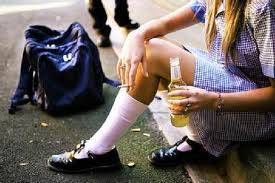 crammed with games, freebies, contests, downloads and music reviews. Teens see more alcohol advertisements in the magazines they read and hear more on the radio stations they listen to, than adults. The most popular television programmes for teenagers feature alcohol advertisements – more than 5000 ads were shown during the 15 most popular of these shows during 2002 at a cost of $52 million.
crammed with games, freebies, contests, downloads and music reviews. Teens see more alcohol advertisements in the magazines they read and hear more on the radio stations they listen to, than adults. The most popular television programmes for teenagers feature alcohol advertisements – more than 5000 ads were shown during the 15 most popular of these shows during 2002 at a cost of $52 million.
Studies have found that the more television a child watches in 9th grade, the more likely they will begin drinking in the following year and a half. One study found that exposure in 6th grade to beer advertisements strongly increased the likelihood that the child would drink alcohol in the following year. Another study found "that exposure to alcohol ads and/or liking of those ads in seventh grade" was a predictor of greater alcohol use and "drinking-related problems later in adolescence". Alcohol is a major cause of death for adolescents and kids who start drinking before they are fifteen are more likely to become alcoholics later in life.
Television is only one of many media outlets that are used to advertise to children. Most youth-oriented magazines feature alcohol advertising and alcohol is also promoted using sponsorship, competitions, online media and mobile phones. In the UK, "a third of young people aged 11–18 are exposed to online alcohol  advertisements on a daily basis". Branded alcohol websites feature games, competition, music and give-aways so as to be attractive to young people. Alcohol marketers also utilise advergaming. There are also mobile phone apps devoted to promoting alcohol consumption, such as Absolut Vodka's 'TalkAbout Kahlua'.
advertisements on a daily basis". Branded alcohol websites feature games, competition, music and give-aways so as to be attractive to young people. Alcohol marketers also utilise advergaming. There are also mobile phone apps devoted to promoting alcohol consumption, such as Absolut Vodka's 'TalkAbout Kahlua'.
Social media sites feature banner and boxed advertisements for alcohol, dedicated profile pages for alcohol brands, pages promoting alcohol-company sponsored events and competitions as well as opportunities "to manufacture an impression of widespread grassroots support for a product, using fake identities, blogs and product reviews."
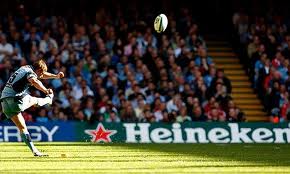 Alcohol marketers utilise a range of media so as to infiltrate the lives of youths in an integrated way so that "young people are exposed to an accumulation of images, associations, and messages relating to alcohol consumption, with brands embedded in everyday interactions and lifestyles".
Alcohol marketers utilise a range of media so as to infiltrate the lives of youths in an integrated way so that "young people are exposed to an accumulation of images, associations, and messages relating to alcohol consumption, with brands embedded in everyday interactions and lifestyles".
Clothing bearing the Jim Beam brand is sold online to children 4 years of age and older. This means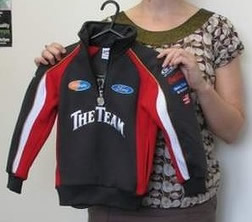 that children are wearing advertisements for an alcoholic drink but is also aimed at familiarising the children with the brand and associating it with their favourite clothing.
that children are wearing advertisements for an alcoholic drink but is also aimed at familiarising the children with the brand and associating it with their favourite clothing.
A UK government's investigation, which accessed internal alcohol industry documents, confirmed that the industry does target teenagers in order to develop drinks that are attractive to young people, to recruit new drinkers and to gain brand loyalty at an early age.
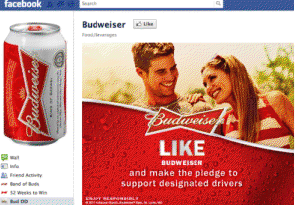 In Australia 75 per cent of teenagers between 14 and 17 consume alcohol at risk levels. "Almost one in four young people aged 14 to 19 years consume alcohol at levels associated with short-term harm on a monthly or weekly basis... for a large proportion of young people, the consumption of alcohol starts early and escalates quickly to risky drinking". The risks associated with this high alcohol consumption at an early age include death and injury as well as "depression, suicide, violence, poor academic performance, risky sexual behaviours, and reckless driving" and in the long term "a range of chronic health conditions, including cirrhosis of the liver, inflammation of the gut and pancreas, heart and circulatory problems, and alcohol dependence".
In Australia 75 per cent of teenagers between 14 and 17 consume alcohol at risk levels. "Almost one in four young people aged 14 to 19 years consume alcohol at levels associated with short-term harm on a monthly or weekly basis... for a large proportion of young people, the consumption of alcohol starts early and escalates quickly to risky drinking". The risks associated with this high alcohol consumption at an early age include death and injury as well as "depression, suicide, violence, poor academic performance, risky sexual behaviours, and reckless driving" and in the long term "a range of chronic health conditions, including cirrhosis of the liver, inflammation of the gut and pancreas, heart and circulatory problems, and alcohol dependence".
Although there are limits on when alcohol can 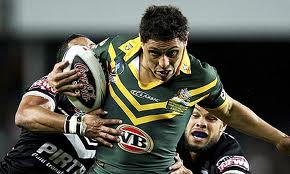 be advertised on television, studies have found that children and particularly teenagers are still exposed to this advertising, which is particularly heavy during live sports broadcasts."A high level of recall and recognition of specific alcohol ads – and the brands they promoted – was found among children who viewed sporting broadcasts".
be advertised on television, studies have found that children and particularly teenagers are still exposed to this advertising, which is particularly heavy during live sports broadcasts."A high level of recall and recognition of specific alcohol ads – and the brands they promoted – was found among children who viewed sporting broadcasts".
According to the Australian Medical Association (AMA):
research consistently demonstrates that young people in Australia are regularly exposed to alcohol marketing across a variety of settings and media platforms. In addition to the ubiquity of alcohol references in the social networking sites and online media frequented by young people, studies have shown that young people continue to be exposed to alcohol marketing through television advertising, print media with a high youth readership, and product placement in film, music videos, comics and video games. Alongside these various forms of marketing, there is accumulating evidence that young people in Australia are encountering alcohol messages, associations and products in a multitude of everyday settings and interactions, including alcohol-sponsored music and sporting events, free gift promotions, alcohol-branded merchandise and interactive competitions...
 Reference: Corinne Dobson, ‘Alcohol Marketing and Young People: Time for a new policy agenda’, Australian Medical Association, ACT, 2012
Reference: Corinne Dobson, ‘Alcohol Marketing and Young People: Time for a new policy agenda’, Australian Medical Association, ACT, 2012.
An extensive body of research indicates that alcohol marketing shapes young people's attitudes and behaviours, encouraging them to take up drinking, and to drink more once they do. The findings of research undertaken in both Australia and abroad show that attitudes and assumptions about drinking are not only shaped by the content of advertising, but also by the sheer volume and variety of marketing. Based on the weight of this evidence, several recent international, systematic reviews conclude that alcohol marketing increases the likelihood that adolescents will start to use alcohol, and will drink more if they are already using alcohol.
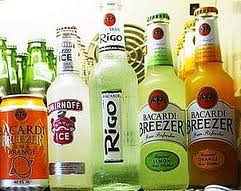 Alcohol marketers promote pre-mixed spirit drinks or alcopops: “bright, sweet drinks that are packaged like soft drinks, and slip down the throat just as easily”. Such drinks, together with their websites, attract children to alcoholic drinks at an early age and consequently, in the 1990s, became the fastest growing drinks market globally.
Alcohol marketers promote pre-mixed spirit drinks or alcopops: “bright, sweet drinks that are packaged like soft drinks, and slip down the throat just as easily”. Such drinks, together with their websites, attract children to alcoholic drinks at an early age and consequently, in the 1990s, became the fastest growing drinks market globally.
An alcohol industry insider admitted that the sweet taste of alcopops was an effort to mask the alcohol taste and be appealing to young palates that were more used to sugary drinks. In this way they would not only buy the product but get used to drinking alcohol.
These 'ready to drink' beverages have been supplemented by the rise of 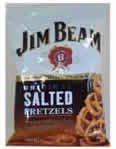 alcoholic energy drinks and ciders in recent years that are particularly appealing to children and teenagers. There are even alcohol flavoured foods that have come onto the market, such as Jim Beam flavoured potato chips, pretzels, and Domino's pizzas, as well as other products such as lip glosses. Such products enable alcohol companies to market their brands to children without advertising to them directly, which would be illegal.
alcoholic energy drinks and ciders in recent years that are particularly appealing to children and teenagers. There are even alcohol flavoured foods that have come onto the market, such as Jim Beam flavoured potato chips, pretzels, and Domino's pizzas, as well as other products such as lip glosses. Such products enable alcohol companies to market their brands to children without advertising to them directly, which would be illegal.